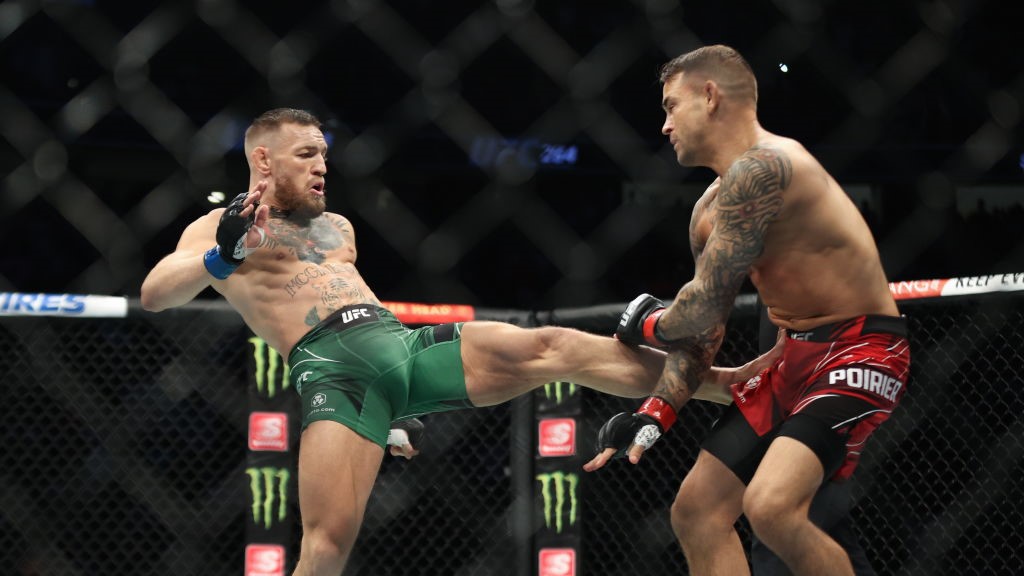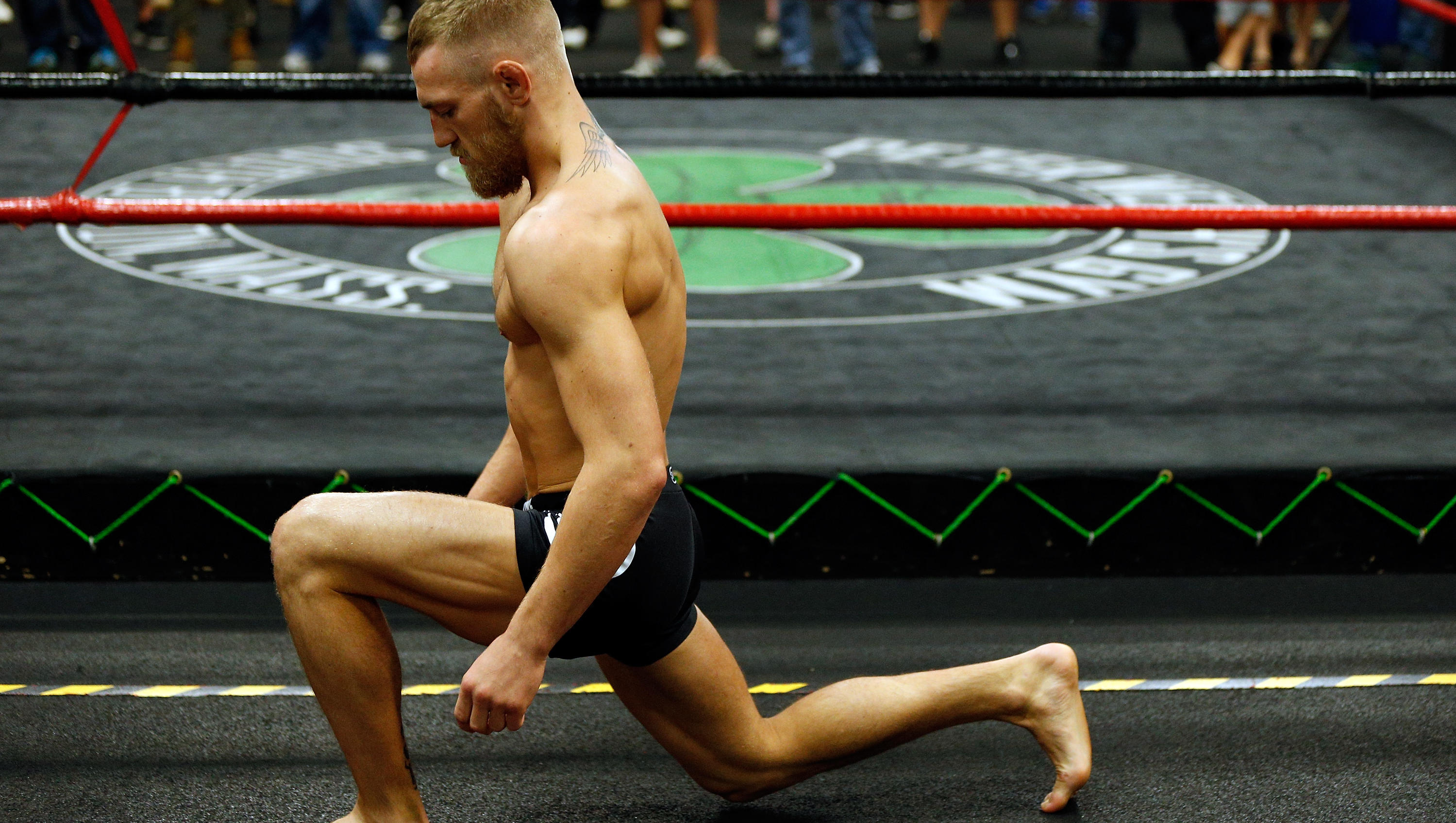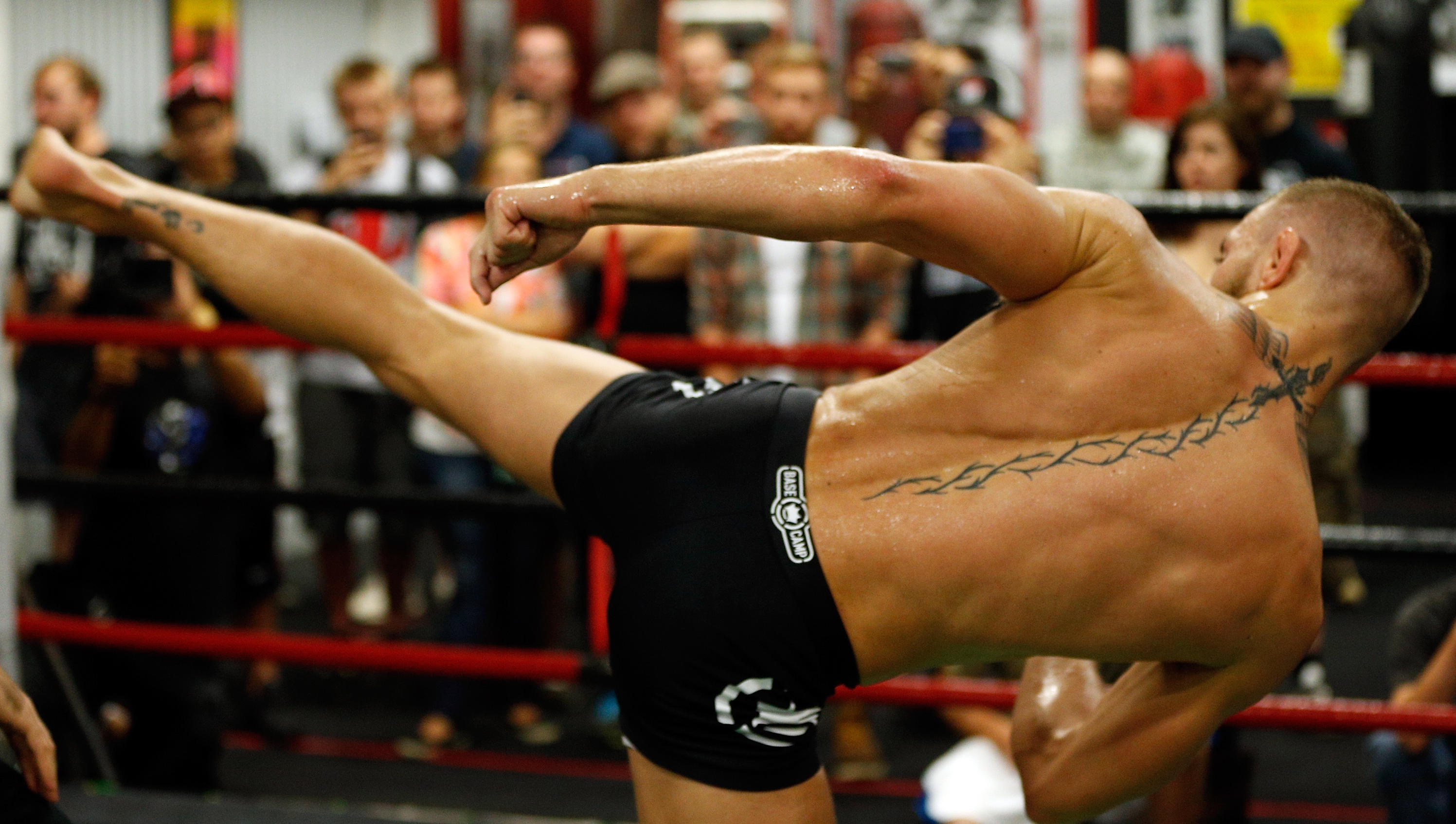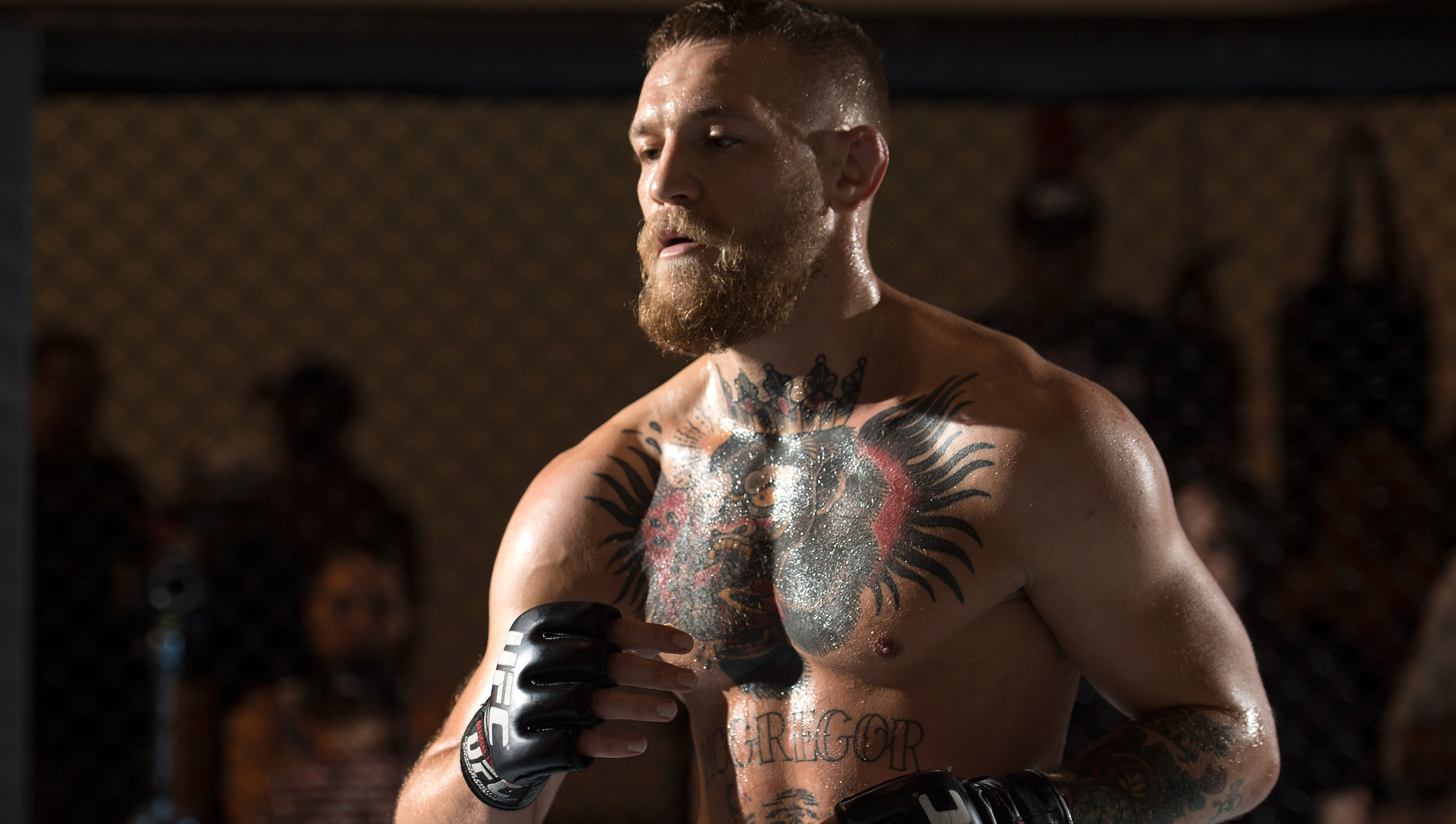I tried Conor McGregor's go-to workout — here's what happened
The toughest fitness challenge I've ever faced

Hi there, Simon here, I'm a fitness instructor on a quest to emulate the exceptional physicality and endurance of an MMA fighter. And what better way to kick-start this journey than by delving into the depths of Conor McGregor’s training regime? McGregor's workouts are legendary — not only for their intensity but also for their strategic focus on strength, agility and mental toughness.
I've been pushing myself to the limits in the gym for the past two weeks, following McGregor's workout, repeating it across Monday, Wednesday and Friday to ensure I get at least 24 hours of recovery. By incorporating his dynamic routine (as laid out by garagegympro.com), my workouts have become a multifaceted affair that mirrors the diverse skill set required in mixed martial arts. And it was one of the toughest fitness challenges I’ve ever faced.

Beyond just the physical aspect, I've also embraced the mental tenacity that Conor McGregor is known for. His unwavering self-belief and determination have played a pivotal role in his sporting success. And every time I tackle one of his grueling workouts, I'm not just testing my body but also my mental fortitude, striving to embody McGregor's unshakable confidence.
Of course, this journey isn't just about trying to match the physical prowess of a UFC superstar; it's about personal growth and self-discovery. Can you rise to the occasion, even if you’re not planning to step into the octagon? Can you draw inspiration from McGregor's journey to improve not only your fitness but also your mindset? From my professional experience of working as a strength and conditioning coach, here are the two cents I can share about his program after trying it out myself.
So here’s my overview of the workout, as well as my personal experience, what I changed about the routine and what I feel can be improved upon (sorry, Conor).
What you'll need
- A space to perform bodyweight exercises
- One of the best yoga mats
- Pull-up bar
- TRX or gymnastic rings
- 90 - 120 minutes
The Conor McGregor workout plan (with some personal adaptations)
The warm-up
| Exercise Name | Sets | Duration | Tempo | Rest |
|---|---|---|---|---|
| Muay Thai knees | 3 | 60 seconds | Controlled | 20 - 30 seconds. |
| Shoulder rotations | 3 | 60 seconds | Controlled | 20 - 30 seconds. |
| Leg swings | 3 | 60 seconds | Controlled | 20 - 30 seconds. |
| Hip circle | 3 | 60 seconds | Controlled | 20 - 30 seconds. |
| Neck bridge *swapped for lateral neck flexion | 3 | 60 seconds | Controlled | 20 - 30 seconds. |
| Exercise Name | Sets | Duration | Tempo | Rest |
|---|---|---|---|---|
| Back Roll | 3 | 30 seconds | Controlled | 20 - 30 seconds. |
| Sit Through Abdominal Stretch | 3 | 30 seconds | Controlled | 20 - 30 seconds. |
| Sit Back Shoulder Stretch | 3 | 30 seconds | Controlled | 20 - 30 seconds. |
| Lying Leg Stretch | 3 | 30 seconds | Controlled | 20 - 30 seconds. |
| Seated Butterfly | 3 | 30 seconds | Controlled | 20 - 30 seconds. |
The warm-up phase of McGregor's routine incorporates dynamic stretching, aiming to prepare the body for the more intense exercises to come. However, there are aspects of this warm-up that warrant attention and that I decided to adapt slightly.
The first is an exercise called the "Neck Bridge." When performed incorrectly, neck bridges can be particularly dangerous, placing significant stress on the cervical spine and neck muscles. Without proper guidance and preparation, attempting neck bridges can lead to neck strain, muscle injury, or even severe issues like cervical spine injuries.
Sign up to get the BEST of Tom's Guide direct to your inbox.
Get instant access to breaking news, the hottest reviews, great deals and helpful tips.
Due to the high risk of injury associated with this exercise, I swapped it for lateral neck flexion dynamic stretch. Be prepared to feel and hear some crunches when doing this dynamic exercise.

On a positive note, I thoroughly enjoyed performing exercises like the Muay Thai Knees which promote hip flexibility and mobility and is crucial for overall physical readiness. Similarly, shoulder rotations enhance blood flow to the upper body, preparing it for the workout ahead. Leg swings and hip circles contribute to improved lower body mobility and blood flow, priming the legs for activities like running, jumping, or squatting.
I thought it was strange to include both dynamic and static stretches at the beginning of the workout. Recent research suggests static stretches are most effective when performed at the end of a workout, as performing static stretches before the main workout may hinder performance and increase injury risk. Dynamic stretches should go before the main workout to prepare the body adequately. I made sure to do the static stretches at the end, as part of the cool-down.
Locomotion conditioning
| Exercise Name | Sets | Duration | Tempo | Rest |
|---|---|---|---|---|
| Duck Walk | 5 | 60 seconds | Controlled | 20 - 30 seconds. |
| Horse Walk | 5 | 60 seconds | Controlled | 20 - 30 seconds. |
| Lizard Walk | 5 | 60 seconds | Controlled | 20 - 30 seconds. |
| Ostrich Walk | 5 | 60 seconds | Controlled | 20 - 30 seconds. |
Loco what? Locomotion training is basically a workout that makes you move like animals, it's effective, and not just an excuse to pretend you're a bear or a crab at the gym. It's all about doing exercises that copy animal movements to improve strength, flexibility, mobility, coordination and overall body control.
The locomotion conditioning component of McGregor's workout regimen introduced a unique and dynamic dimension to my training, something I've never stuck to or even tried consecutively. In the past I've done bear crawls forward and reverse for CrossFit, but this was a whole new dimension.
The movements, including Duck Walk, Horse Walk, Lizard Walk and Ostrich Walk, pushed my physical boundaries and provided a fresh perspective on functional training. These exercises, when done consecutively over time, will help improve locomotor skills, core strength and body awareness, translating into enhanced athletic performance. Something that I’ll be taking away from McGregor’s plan and practising every other day.
These exercises, when done consecutively over time, will help improve locomotor skills, core strength and body awareness, translating into enhanced athletic performance.
However, it's essential to note that performing locomotion conditioning before the main workout can be counterproductive, especially if you're already fatigued.
These exercises, particularly for those new to this type of training, can be complex and challenging to execute correctly, making them even more demanding when performed in a fatigued state. Relocating locomotion conditioning to after the main workout and before the cool-down phase helped optimize my workout.
The main workout
| Exercise Name | Sets | Duration | Tempo | Rest |
|---|---|---|---|---|
| Muscle Ups *Substitute For Inverted Pull Ups Neutral Grip | 5 | 60 seconds | Controlled | 20 - 30 seconds. |
| Press Ups | 5 | 60 seconds | Controlled | 20 - 30 seconds. |
| Pull Ups | 5 | 60 seconds | Controlled | 20 - 30 seconds. |
| Air Squat | 5 | 60 seconds | Controlled | 20 - 30 seconds. |
McGregor's main workout regimen offers a holistic approach to physical fitness, encompassing flexibility, strength, power and endurance training. Great to do if you are an intermediate/advanced fitness lover looking to carve some serious stamina. Another great thing? Very little equipment required.
The exercise selection in the bodyweight circuit is somewhat limited, lacking horizontal pulling exercises, hip/hinge movements, or vertical pressing exercises. Why are these important you may ask? All 13 components (knee dominant, hinging, vertical press, horizontal press, vertical pull, horizontal pull, twisting, spinal flexion, spinal extension, carrying, balancing, plyometrics and locomotion), are vital to include in order to develop a well-rounded fitness routine because they target different muscle groups and movement patterns, contributing to overall strength, functionality and posture.
Although this routine represents just one part of McGregor's training regimen, maintaining balanced muscle development across various muscle groups is vital. For the average fitness enthusiast, the routine may lack specificity due to its broad focus on multiple muscle groups, resembling more of a general fitness routine.
Let's look at tempo. Workouts typically adopt a 4-digit tempo. Think of a push-up, for example. You have the eccentric phase (in this case, lowering your chest), a pause, the concentric phase (pushing up) and a pause at the top.
While the workout doesn't specify a 4-digit tempo, MMA training typically involves explosive movements. It's essential to diversify movement velocity during resistance exercises to incorporate eccentric training, explosiveness and isometric holds (like a plank, when muscles are held under tension) to develop muscle and strength.

The prolonged duration of 60 seconds per exercise across five sets can prove to be exceedingly strenuous. I needed extended rest intervals, especially when attempting the muscle-ups segment, as it posed a formidable challenge. In place of muscle-ups, I opted for inverted pull-ups with a neutral grip as I wanted to work on my horizontal pulling strength. If you wish to replicate the muscle-up movement, you could attempt a assisted muscle up using a rubber band or two. However, it's crucial to bear in mind that during the third exercise of this routine, pull-ups are to be completed, making it overly demanding.
For individuals with limited endurance, I would strongly advise considering an alternative workout plan first before attempting this one. Sustaining proper form and intensity throughout extended sets can be quite demanding and could elevate the risk of injury. Consequently, I found myself resorting to kipping, (a technique in CrossFit where you use a swinging motion to perform exercises like pull-ups or muscle-ups, utilising momentum). Rather than performing strict-form pull-ups after the third set. Regrettably, this compromise inadvertently affects the main workout performance.
For individuals with limited endurance, I would strongly advise considering an alternative workout plan first before attempting this one.
The constrained variety of exercises in the main workout are all bilateral exercises, which unintentionally can result in muscular or strength imbalances. A well-rounded strength training program usually incorporates unilateral exercises that focus on individual limbs performing the movement; an example would a dumbbell bench press or a split squat.
Unilateral movements are exceptional for addressing both strength and muscular disparities. Bilateral exercises (like the leg press or a pull-up) are when both limbs perform the load, which are ideal for progressive overload but limited for working on strength and muscular imbalances. In this context, it would be beneficial to introduce unilateral exercises like Bulgarian lunges, bent-over dumbbell rows, or a seated kettlebell shoulder press, alongside bilateral ones.
McGregor's workout regimen at least for me, required adjusting but once you’ve made the program bespoke to your needs, you can yield significant results provided you have followed the recommendations above.
When program designing, it requires careful consideration of factors like exercise selection, tempo, duration and rest intervals to ensure safety and effectiveness. Finally, the routine's minimal equipment requirements enhance accessibility but limit exercise variety. Incorporating a broader range of exercises with equipment can offer a more engaging workout experience and a well-rounded fitness routine.
How I felt after training like Conor McGregor

Discovering Conor McGregor's workout plan was like stumbling upon a hidden treasure trove of physical and mental challenges. As a fitness enthusiast, I'm always on the lookout for new and demanding routines and McGregor's regimen promised just that. The idea of emulating the physicality and endurance of an MMA fighter was a thrilling prospect and I eagerly dived into the depths of his training regime.
The initial workouts were exhilarating yet a relentless slog. Performing the neutral grip pull-ups in replacement of the muscle ups was a saving grace, regular pull-ups and three additional exercises in a single workout was demanding. The intensity was unlike anything I had encountered in a long time, especially with such short rests between sets. There were moments when I found myself on the verge of giving up, when the weight of fatigue and self-doubt threatened to overwhelm me. But it was precisely in those moments that I drew inspiration from Mr. McGregor himself. His unwavering self-belief and determination became my guiding light. I reminded myself that it was only for two weeks!
Performing the exercises for five sets was taxing mainly on my upper body and mentally.
The intensity was unlike anything I had encountered in a long time, especially with such short rests between sets.
However, the pump I felt in my muscles was intense, especially in the arms. The squats didn’t fatigue my legs as much as I expected and I felt the intensity to be more on par with a warm up. If you were to replace these with lunge jumps, sissy squats, or Bulgarian split squats this would fatigue the legs so much more.
It was a relentless battle towards the last three sets in the first week and the last two sets in the second week. But as the sweat poured and the muscles burned, I could feel myself growing stronger, both physically and mentally.
After two weeks of following McGregor's workout plan religiously, I began to see some promising results. My strength and endurance had improved noticeably, originally being able to perform 15 strict pulls-up in one go to 18 pull-ups, I feel that my grip strength was the main reason me being able to perform additional reps.
I found that I was able to perform more press-ups and inverted pull-ups than before, both exceeding my previous record of three to four reps for both exercises. The bodyweight air squats remained the same. As a result, these results have motivated and made me hungry for more. McGregor's regimen had not only pushed my physical boundaries but also unlocked a newfound mental resilience, reminding me that greatness is achieved through persistence and unwavering determination.
